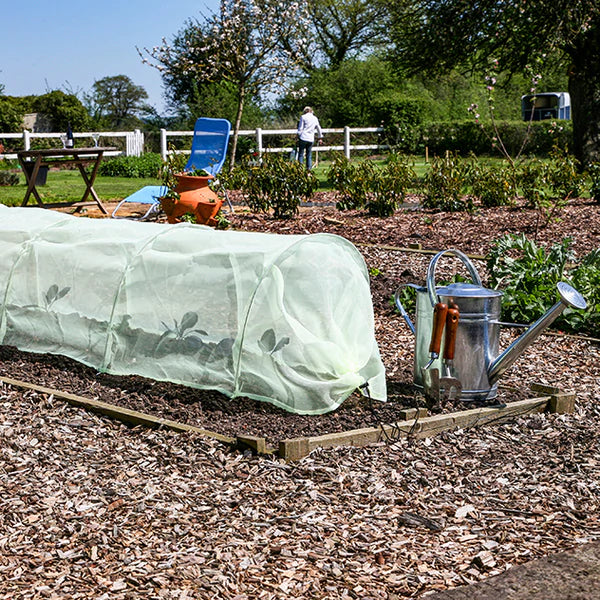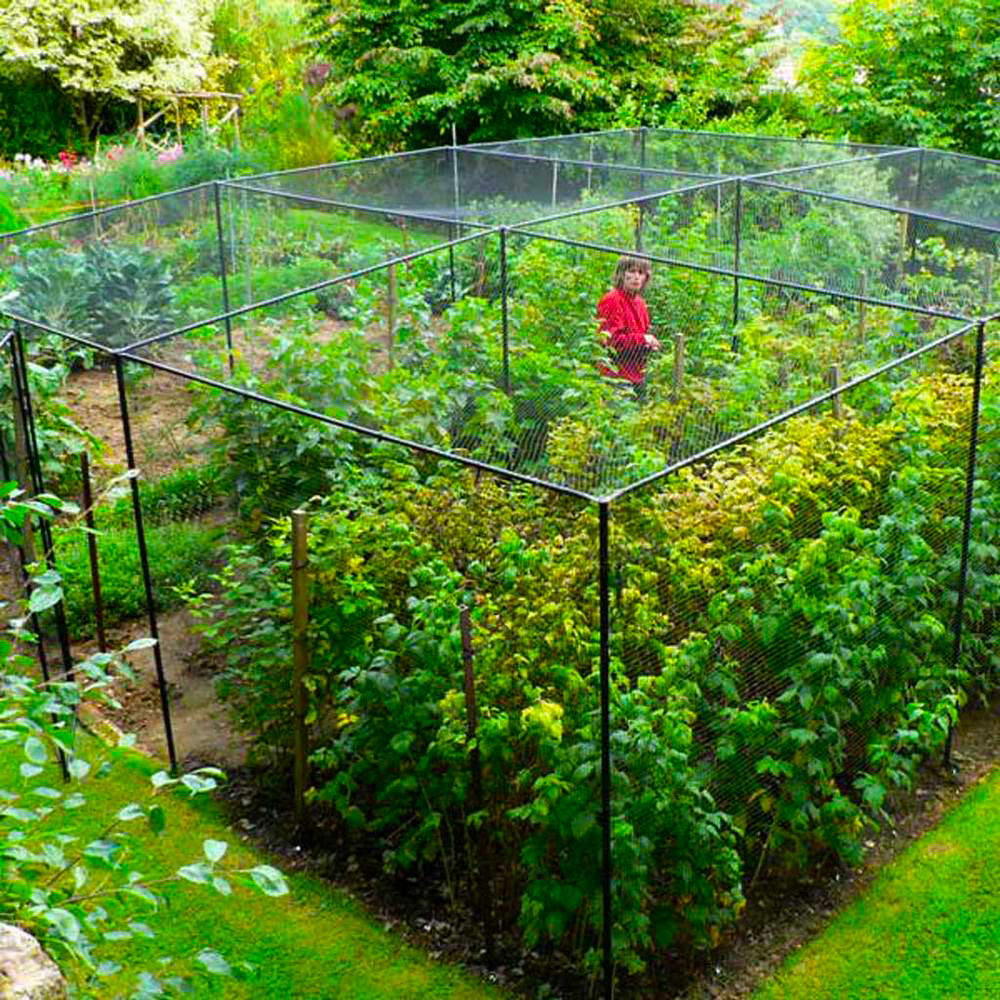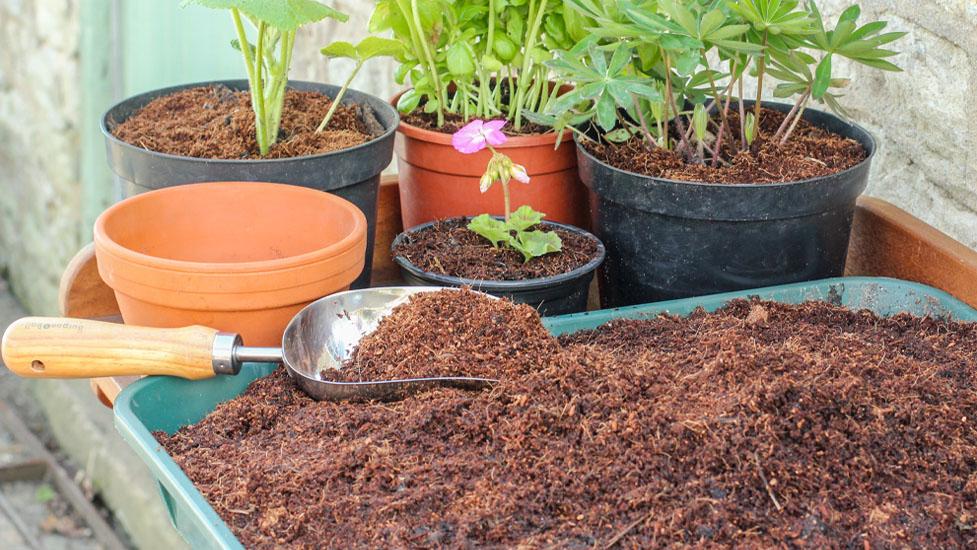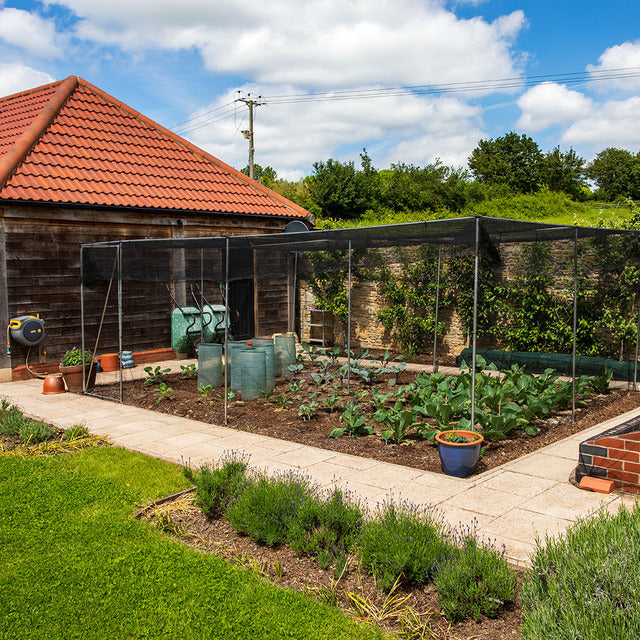Prepare the Soil
If you garden on wet or heavy clay ground complete any winter digging that still needs doing - spring winds and sun will start drying it out that you can soon start working the soil in earnest, even in the dampest areas.
Tidy borders
If you do nothing else this month make the spring clean of beds and borders your top priority. Go through the beds systematically with a hand fork or Speedhoe lifting out weeds and cutting down any dead stems of perennial plants left from last autumn.  Cut them off as close to the base of the plant as you can without damaging emerging buds or young foliage - Besides looking tidier it means there are no stubby stumps left to harbour disease or spike your fingers when you're weeding later. Fork the soil over between plants to loosen it while you work and gather up and remove any old bits of plant debris as well as slugs and snails.
Cut them off as close to the base of the plant as you can without damaging emerging buds or young foliage - Besides looking tidier it means there are no stubby stumps left to harbour disease or spike your fingers when you're weeding later. Fork the soil over between plants to loosen it while you work and gather up and remove any old bits of plant debris as well as slugs and snails.
When clearing the garden watch out for any self sown seedlings it's worth transplanting or putting aside to use elsewhere in the garden - even if you can't use them yourself they often come in handy for swapping with friends or donating to charity events later.
Mulch
While the soil is still soft from its fork over, cover with a generous layer of organic matter such as garden compost, rotted manure, mushroom compost or bark chippings up to 5cm deep. You may like to sprinkle general fertiliser over the soil before mulching but if the weather is still cold and plants have hardly started to move it's better to wait until next month to feed to avoid encouraging lush growth which will be knocked back by frost.
Mulching benefits the garden in several ways all of which will save you work for the rest of the season - it covers weed seeds keeping them in the dark so they can't germinate, reduces evaporation so you save on watering and it's a good way to add organic material to the ground that you can't dig because there are plants growing - by mulching the worms do the job for you.
Plant Grown Shrubs and Climbers
Plant pot grown woody plants such as trees, shrubs, climbers, hedge plants and roses. Pot grown plants come complete with all of their roots and as long as you are careful to keep the root ball fairly intact when you plant it the plant will hardly know it's been moved and will carry on as usual. Although you can plant virtually anytime you like the very best time to plant woody plants is at the beginning or end of the growing season when the weather is not extreme either way. The advantage of planting during the growing season is that you can choose plants in full flower so you can see exactly what you're buying and its effect on the garden instantly but you will need to keep new plants water during dry spells so that they can establish themselves. You can plant pot grown roses at anytime, but if you plant them now they'll have time to make enough growth to put on decent show of flowers this season. As an added bonus new roses coming from a good nursery at the start of the season will almost certainly have been properly pruned before you buy them so you can just put them in and leave them to it.
You can plant pot grown roses at anytime, but if you plant them now they'll have time to make enough growth to put on decent show of flowers this season. As an added bonus new roses coming from a good nursery at the start of the season will almost certainly have been properly pruned before you buy them so you can just put them in and leave them to it.
Roses benefit from being planted slightly deeper than other shrubs because roses are generally a combination of two plants - the top part with all the stems is the named variety and the roots below belong to a different species, chosen for its good growing qualities. The bulge you often see where the stems and roots join is the ‘union’- Ensure that the union is buried under the surface when planting in order to encourage stem rooting then firm in and water and mulch well.
Plant other pot grown plants and climbers at the usual planting depth with the junction between the roots and shoots roughly level with the surface of the ground.
If you are planting against a wall or a structure place the plant at least 30 cm away so that it roots won't be dehydrated or disturbed in long hot summers and there is no risk of causing issues with foundations or stability.
Prune Dogwoods
Prune coloured stemmed Dogwood and willows which are grown for their coloured winter stems - cut the oldest stems off 15cm from the ground to encourage a good crop of new young stems which have the brightest coloured bark.
Renovate Climbers
Renovate overgrown climbers by removing a few of the thickest old stems from the base of the plant - its easiest if you trace those stems back and cut into shorter lengths that can be unthreaded more easily and give you space to work back towards the base of the plant. Tidy up Ivy, summer flowering Jasmine and Honeysuckle. If you still have large flowered clematis unpruned then give them a very light tidy up with a small hand tool such as Snip It, but nothing more or your miss out on some of the summer flowers.
Tidy up Ivy, summer flowering Jasmine and Honeysuckle. If you still have large flowered clematis unpruned then give them a very light tidy up with a small hand tool such as Snip It, but nothing more or your miss out on some of the summer flowers. In the case of overgrown rambler or climbing roses select one or two of the oldest stems that form the main framework of the plant - These will be the most gnarled woody ones that don't flower so well in the summer - and cut those out completely.
In the case of overgrown rambler or climbing roses select one or two of the oldest stems that form the main framework of the plant - These will be the most gnarled woody ones that don't flower so well in the summer - and cut those out completely.
Train Roses Onto Your Structure
Over the summer look out for a couple of well placed new shoots growing out from near the base of the plant and tie them up to whatever the plant is growing on. Space them out so they fill the gap in the existing framework and cover the Arch or garden structure attractively.
Sow Hardy annuals
Hardy annuals are an ideal way to fill a garden without a huge budget – ideal if you lots of summer flowers for bedding, cutting or containers. What sets Hardy annuals apart is that they withstand the cold so you can grow them outdoors from start to finish. Hardy annuals are particularly easy to grow on sandy soil but wherever you grow them the secret of success is well prepared well drained earth.
Plant Perennials
Perennials flowers die down each winter and then re appear each spring and are great to grow in herbaceous borders or in gaps between shrubs in a mixed border - The best time to plant new perennials is at the start of the growing season so they have time to establish before they flower.
Divide Perennials
As perennial plants grow the clumps spread out from the centre once they crowded and overgrown, fight for space with their neighbours or start dying out in the middle – this is when they need digging up and dividing. Some spread faster than others but you can usually expect that three to six years after planting they will benefit from splitting out.
The best time to divide perennials is in spring when they're a little more than cluster of small shoots pushing through the soil. If you wait until the young leaves are opened out there's a bigger area for water loss so your newly divided plant may wilt and struggle to re-establish. A few very tough perennials such as Asters can be divided in autumn but if you want to do the job all in one go this is the best time to do it.
Dig Up & Divide Snowdrops
Divide clumps of snowdrops now after the flowers are over, but before the leaves die down - what's known as’ in the green’. Unlike most spring bulbs snowdrops have a very short summer rest and the bulbs hate drying out so they move best when they're still growing.
Dig up clumps and separate them into clusters of three or four bulbs then replant at 15cm spacings. Snowdrops normally like to be left undisturbed so they only need dividing when they're so overcrowded that they no longer flower - you can also use this method to if you want to encourage them to naturalise somewhere else in the garden.
Prepare The Soil For Sowing in the Kitchen Garden
Ground that's already been dug only needs final preparation to make it ready for sowing - hoe off any weeds take out any stones or bits of root. Sprinkle a light dressing of general purpose organic fertiliser over the area and rake down to a fine tilth leaving a seedbed the texture of cake crumbs.
Although it's tempting to fill the vegetable garden up all at once resist it for now. There are only a few things that you can sow or plant this soon and it will be necessary cover early crops with fleece or cloches for protection - anything you can so now will also wait until next month if you prefer.
If you can't wait to make a start outside it is useful to warm the soil with cloche or fleece tunnel - vegetables suitable for early sowing include lettuce, rocket, radish, spring onions, leeks, onions, broad beans, parsnips, spinach, turnips, early varieties of carrots and peas.
Plant New Potatoes
Many people feel that main crop potatoes are not normally worth growing unless you have a lot of space, but there's one kind that you really shouldn't miss out on and that's the first earlies - the varieties that produce wonderful baby new potatoes in June - and these do very well in Vigoroot Containers which can be placed in a warm spot to make the most of spring sunshine.
In a mild area or an early spring they can go in at the end of this month -for the very earliest crops cover the rows with fleece or cloches to speed them up - elsewhere wait until April to make sure the emerging plants are safe from the frost.
Plant Onions
Prepare the ground as if you were sowing seed then take out small holes with a trowel and lower the sets into the soil so that they just disappear from view - if you leave the top showing the blackbirds may pull them out.
Space the onion sets about 10cm apart in rows 30 cm apart so there's just enough room to run a hoe between them later. Water well and if disturbance from birds is a problem protect with net or an Easy Tunnel until they are established.
Tidy Up Around Strawberry Plants
Take out any weeds, remove dead leaves and loosen up compacted soil with the point of a small border fork - take care when as strawberries have shallow roots – a Speedhoe Precision will make it easier to avoid damaging them. Leave feeding until next month so as not to encourage an early growth that may be hit by a late frost.







Leave a comment